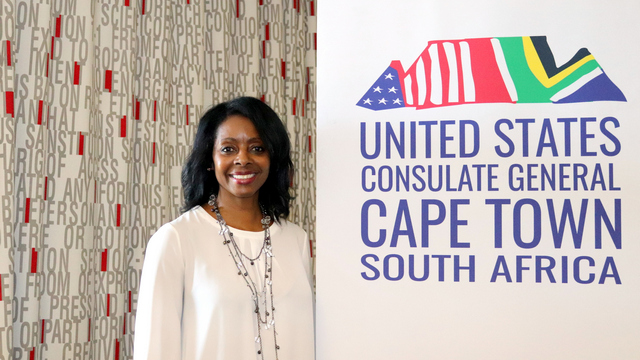
By Sphumelele Ndlovu, Postgraduate Diploma in Journalism and Media Studies Student.
Room 202 in the African Media Matrix was abuzz with journalism and political studies students and lecturers waiting to hear what CNN’s Jennifer Thomas had to say on reporting on elections in a time where “fake news” is rife.
One of the biggest threats associated with “fake news”, according to The Conversation, is that the term is “poorly-defined and misleading”. Earlier this year, the British government decided the term should be banned, especially from official documents. Furthermore, the parliamentary Digital, Culture, Media and Sport Committee (DCMS) put forward an agreed definition of the words 'misinformation' and 'disinformation’.
The term itself could be viewed as threat to democracy because it is so commonly exploited, especially by politicians. Politicians will use the term to refer to any news that is critical of them, whether the news in question is true or not. This undermines the work journalists do, and causes confusion and distrust in the media.
Thomas proceeded to ask attendees what they thought the job of a journalist entailed. The general consensus was that it is a journalist’s responsibility to hold government accountable for their actions and decisions, to facilitate discussion and to inform people about what is happening around them in an ethical way.
This led to the question of the mainstream media spending time responding to “fake news” stories, however, if so much time is spent covering “fake news”, there is none left to look at policies.
Furthermore, reporting the news has become increasingly difficult as the public’s faith in the media continues to dwindle. In light of this, Thomas asked, “How do you do your job when everyone is vilifying your profession?”
She then asked attendees whether they thought the media was made up of either fair and balanced journalists, vultures, “fake news” or simply people with jobs in the industry. After several suggestions from the room, she noted that every option but “fair and balanced journalists” was given in answer. “These views are commonplace. Not even my own colleagues regard the media as being made up of fair and balanced journalists,” she explained.
There are various ways in which misinformation can be generated and disseminated. The first is via blogs, as many news platforms have an online version where blogs can be posted and shared, mostly on social media. This becomes a problem because blogging platforms are not regulated or limited. This causes confusion as readers interpret this content as real news.
This is further worsened by the ‘echo chambers’ that exist within social media. According to Thomas, ‘echo chambers’ are bubbles in which people only have access to news that represents their singular ways of thinking. This reinforces the ideas that one’s beliefs, views and judgements are correct, and this can be ultimately harmful.
An example of this was a false claim that insinuated Hillary Clinton was running a child sex ring from inside a Comet Ping Pong pizzeria, in a conspiracy referred to as “Pizzagate”. After getting wind of this, a man went to the pizza restaurant to investigate and fired several shots with an assault weapon. This incident happened because of this man’s echo chamber. Since all the people in that echo chamber think the same way, group thinking thrives and according to Thomas, “Group thinking helps “fake news” spread.”
Thomas demonstrated how quickly misinformation not only spreads, but how fast a story morphs. She demonstrated this by engaging attendees in a game of ‘Broken Telephone’. As expected, the original message was not accurately relayed. “One’s interpretation of a story depends on where you sit on a particular issue,” Thomas explained.
However, all is not too bleak for South Africans… yet. Due to the high cost of data and lack of access to the internet, online “fake news” is not as large a threat as it is in the United States. Furthermore, the country’s low literacy levels also act as a deterrent to accessing misinformation.
In closing, Thomas offered some tips on how to not fall victim to “fake news”. The first of these, she said, was to consider the source. “Inspect the URL of the article and check out the “About Us” section of the website,” she advised. She also encouraged a skeptical attitude when reading news. “Question the validity of the article and reputation of the media outlet,” she urged. This includes checking up on the author of the article as well as those quoted in the article.
“It is also useful to look at the pictures, and if possible, check the metadata which includes details like the date the picture was taken. This is helpful in cases where an old picture is used in a fake news story and presented as current.”
To the budding journalists, Thomas said, “Keep telling the stories that really matter.”
Jennifer Thomas works as an executive producer for CNN Headline News and an assistant professor at her alma mater, Howard University. She was in South Africa courtesy of the US Consulate in Cape Town.
